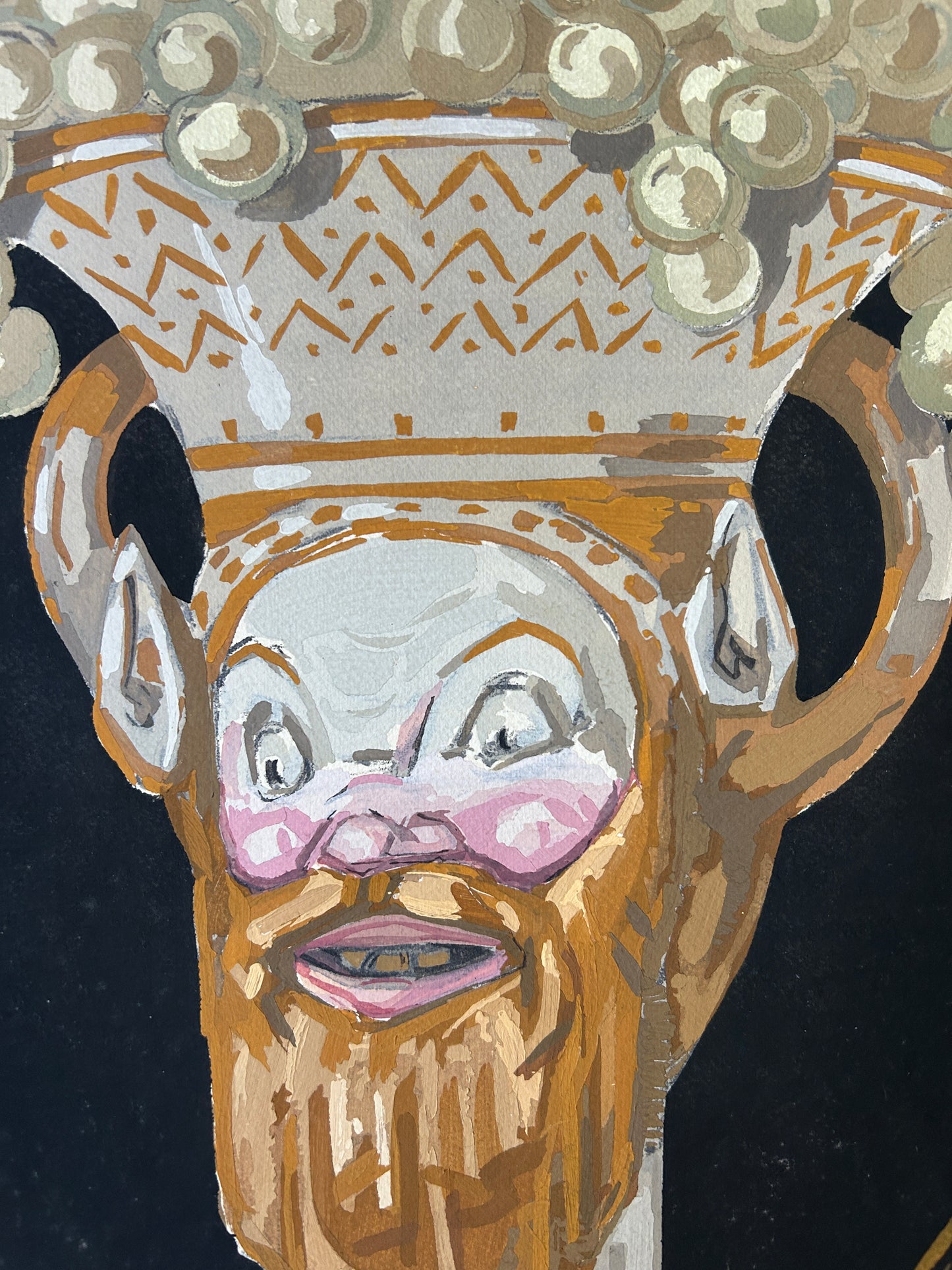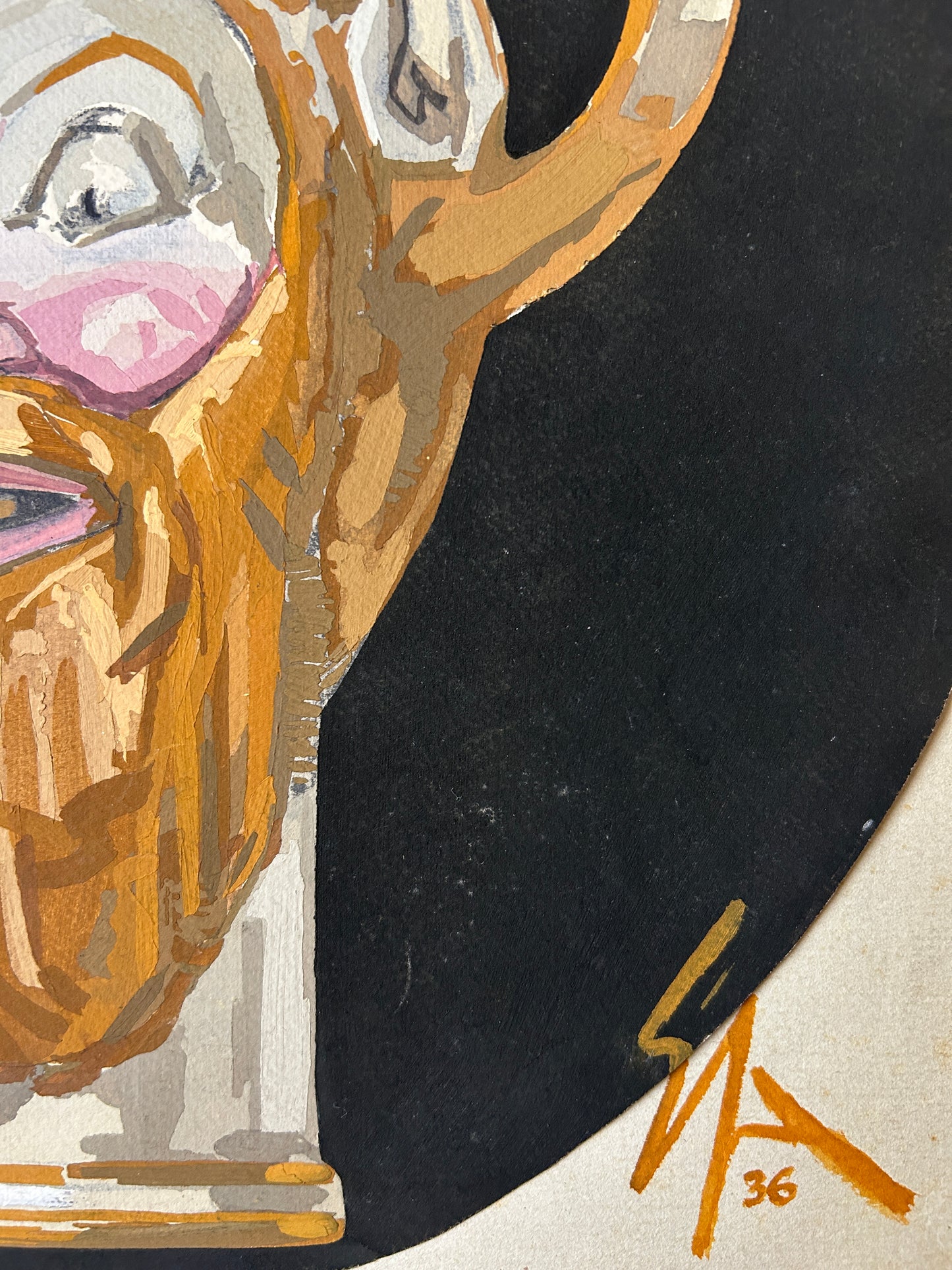Sicilian Moor’s Head Painting
Impossibile caricare la disponibilità di ritiro
Sicilian Moor’s Head
If you have been to Sicily or are a fan of the hit series White Lotus, this image will be familiar. It is an oil on paper depiction of the famous Sicilian Moor’s Head, which is the most famous image in Sicily. Normally seen only in ceramic, this still-life painting is signed by the artist and dated 1936.
Oil on Paper
40 x 29 cm
Signed and dated lower right
£125
The Moor’s heads are symbolic of Sicily and are recognised all over the world. They are elegant hand-painted ceramic decorative vases. Moor’s heads represent Sicilian culture and handicrafts and are among the most popular souvenirs. They portray the face of a man wearing a turban, a vision the East, and a woman with a crown. Both are embellished with jewellery, flowers and citrus fruits. The Moor’s Heads, also known as Graste. They tell a story of passion, betrayal, jealousy and revenge.
The legend says that during the the time of the Moor domination in Sicily, there lived a beautiful girl in the Arab quarter Kalsa (in the heart of Palermo) who loved to take care of plants on her balcony. One day she was noticed by a Moor who fell in love with her. The man told her of his feelings and the two were overwhelmed by desire. When the girl found out that her lover would soon travel back to the East, where a wife and children were waiting for him, the ‘green-eyed monster’ possessed her.
Mad with jealousy, feeling humiliated by the betrayal, the girl killed the Moor while he was asleep. In a fit of incredible violence, she cut off his head and used it as a vase in which she planted a bud of basil. The girl watered the plant with her tears and, as time went by, the basil grew luxuriantly. The heady scent of the King’s plant (from the Greek Basilikos) caused the envy of the girl’s neighbours, who immediately ordered ceramic vases with the same features as the Moor’s Head. That’s how the beautiful girl started a tradition that is still in use.
According to another story, the Moor’s Heads represent the impossible love of a young couple. The girl was Sicilian and had noble origins, while her lover was a young Arab. When their love affair was discovered, her family cruelly punished them both by beheading them.
Their heads were then turned into vases and hung as warnings on a balcony. This is why the ceramic heads are always made in pairs, in memory of the two young lovers who were murdered together.












